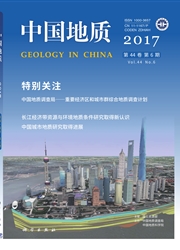

 中文摘要:
中文摘要:
新疆南天山库尔干南阿尔腾柯斯组硅质岩地层中发现了丰富的保存良好的放射虫化石,共计21属34种,11个未定种,1个未定种属。研究表明,两个样品的放射虫组合时代分别为中-晚泥盆世和早石炭世。中-晚泥盆世放射虫组合的发现,丰富了库车地区泥盆纪放射虫生物群组合,为确定阿尔腾柯斯组的时代奠定了生物化石依据。结合前人对该组生物化石的研究,该组为跨时代岩石地层单元,应予解体。而具有早泥盆世-晚石炭世放射虫硅质岩的深水海相沉积地层为古南天山洋盆的演化过程提供了地层学证据。
 英文摘要:
英文摘要:
Abundant well-preserved radiolarians were discovered in cherts in the Artengkesi Formation south of Korgan, South Tianshan, Xinjiang. They compris 21 genera and 46 species, of which eleven are indefinite species and one is indefinite genus. Study indicates that the radiolarian assemblages of two samples are Middle- Late Devonian and Early Carboniferous in age. The discovery of the Middle-Late Devonian radiolarian assemblage enriches the Devonian radiolarian fauna in the Kuqa area and provides fossil evidence for the determination of the age of the Artengkesi Formation. On that basis, combined with previous studies of fossils in this formation, the authors think that this formation is an age-straddling lithostratigraphic unit and should be disintegrated into the lower, Middle and Upper Devonian stratigraphic units. The abyssal sediments containing Early Devonian-Late Carboniferous radiolarian cherts provide stratigraphic evidence for the evolution of the South Tianshan paleo-ocean basin.
 同期刊论文项目
同期刊论文项目
 同项目期刊论文
同项目期刊论文
 期刊信息
期刊信息
